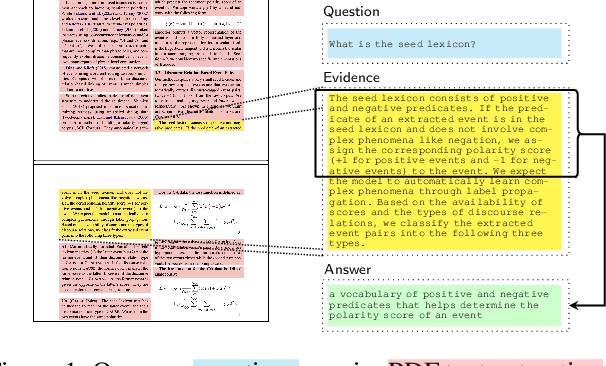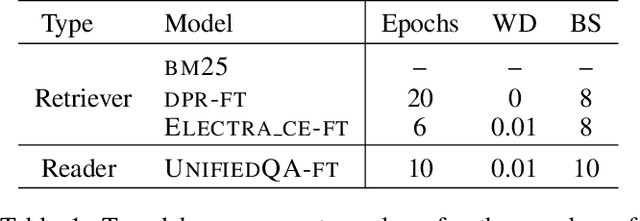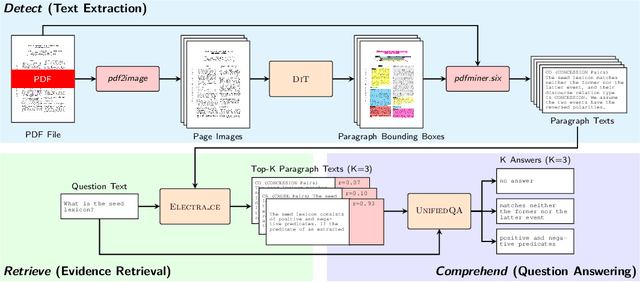Juanita Ordonez
Detect, Retrieve, Comprehend: A Flexible Framework for Zero-Shot Document-Level Question Answering
Oct 04, 2022



Abstract:Businesses generate thousands of documents that communicate their strategic vision and provide details of key products, services, entities, and processes. Knowledge workers then face the laborious task of reading these documents to identify, extract, and synthesize information relevant to their organizational goals. To automate information gathering, question answering (QA) offers a flexible framework where human-posed questions can be adapted to extract diverse knowledge. Finetuning QA systems requires access to labeled data (tuples of context, question, and answer). However, data curation for document QA is uniquely challenging because the context (i.e., answer evidence passage) needs to be retrieved from potentially long, ill-formatted documents. Existing QA datasets sidestep this challenge by providing short, well-defined contexts that are unrealistic in real-world applications. We present a three-stage document QA approach: (1) text extraction from PDF; (2) evidence retrieval from extracted texts to form well-posed contexts; (3) QA to extract knowledge from contexts to return high-quality answers - extractive, abstractive, or Boolean. Using QASPER as a surrogate to our proprietary data, our detect-retrieve-comprehend (DRC) system achieves a +6.25 improvement in Answer-F1 over existing baselines while delivering superior context selection. Our results demonstrate that DRC holds tremendous promise as a flexible framework for practical document QA.
Grid Search Hyperparameter Benchmarking of BERT, ALBERT, and LongFormer on DuoRC
Jan 15, 2021



Abstract:The purpose of this project is to evaluate three language models named BERT, ALBERT, and LongFormer on the Question Answering dataset called DuoRC. The language model task has two inputs, a question, and a context. The context is a paragraph or an entire document while the output is the answer based on the context. The goal is to perform grid search hyperparameter fine-tuning using DuoRC. Pretrained weights of the models are taken from the Huggingface library. Different sets of hyperparameters are used to fine-tune the models using two versions of DuoRC which are the SelfRC and the ParaphraseRC. The results show that the ALBERT (pretrained using the SQuAD1 dataset) has an F1 score of 76.4 and an accuracy score of 68.52 after fine-tuning on the SelfRC dataset. The Longformer model (pretrained using the SQuAD and SelfRC datasets) has an F1 score of 52.58 and an accuracy score of 46.60 after fine-tuning on the ParaphraseRC dataset. The current results outperformed the results from the previous model by DuoRC.
 Add to Chrome
Add to Chrome Add to Firefox
Add to Firefox Add to Edge
Add to Edge